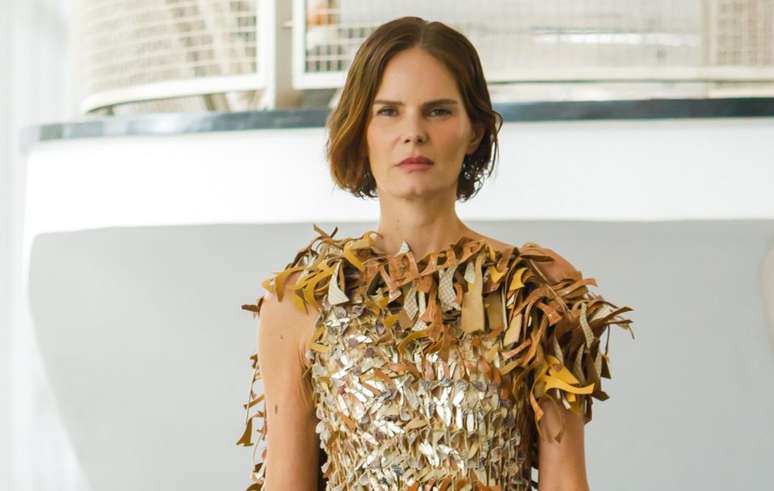The German producer shows the advantages of the regenerative approach in practice and says he is convinced that it is possible to produce as much as with industrial agriculture. The state of Brandenburg is not the most suitable for those who want to engage in agriculture in Germany. The soil is poor in nutrients and sandy. And farmers still face frequent droughts.
Even so Benedikt Bösel decided to take a risk. In 2016 he put aside his career as an investment banker and took over the farm that his parents had rebuilt after the reunification of Germany.
There are 3 thousand hectares, of which 2 thousand are forested and one thousand agricultural land. The parents had already opted for organic production and Bösel decided to innovate further.
For him the future lies in the digitalisation of agriculture. “Always in the financial sector I have worked mainly with start-ups in the agricultural sector and this has given me an excellent knowledge of these technologies”, he explains.
Two dry summers early in his farming career taught him lessons. “It has become increasingly clear to me that technology is often used to address the symptoms of a sick production system,” he says.
Soil is the basis of everything
Today he is convinced that the challenges posed by climate change, in particular the unpredictability of the weather, cannot be overcome with technological solutions alone.
More important is to restore ecosystems. Therefore, today soil health and maintaining biodiversity are at the heart of Bösel’s efforts.
The inspiration to create a healthy agricultural production system was found in the Swiss Ernst Götsch, who used Brazilian agroforestry to make an area declared unusable fertile again.
Anyone who goes to the Bösel estate today finds fields divided every few meters by narrow strips in which trees and bushes grow, which form a barrier against the wind and thus reduce soil erosion.
These barriers also ensure a wetter microclimate, provide habitat for insects and birds, store carbon dioxide in the soil, help form humus, and even provide nuts, berries or fruits that can be harvested.
More than 150 cows graze outdoors all year round. Not on pastures, but on arable land. They grow perennial cultivable fodder, such as grasses, legumes, and various grasses.
The animals graze in small fenced areas. Two to four times a day they are redistributed using movable fences. So the cows are always together. They graze and trample fodder. They then quickly move to the next pen, leaving the manure behind. This method simulates natural grazing.
“Bitten by animals, plants react by developing roots,” says Bösel. At the same time, the trampled plants protect the soil from the sun and provide food for soil organisms. “This form of grazing is one of the few methods to store carbon in the soil very effectively, rapidly and long-term.”
Food for everyone?
These are just some of the approaches to regenerative agriculture. And they soon showed results. Bösel says he is satisfied that the trees and shrubs grown from seeds have had no problems, despite last summer being extremely hot. Grazing would also have led to an improvement in the quality of the soil and its ability to absorb water.
“But it must also be said that it is not always possible to constantly cover the soil. Especially when planting annual cereals, these areas must be cultivated continuously.” If an unfavorable weather situation occurs at the wrong time, such as a drought, the farmer goes back to square one.
As positive as all this sounds, the question remains: is it possible to feed more than 8 billion people without resorting to industrial agricultural production? There are arguments in favor. According to the Food and Agriculture Organization of the United Nations (FAO), one third of the food produced in the world today comes from properties of less than two hectares, i.e. from non-industrial production.
Furthermore, the demand does not necessarily have to be that high. A study by the consultancy firm McKinsey showed that 2 billion people eat until they get sick and that up to 40% of all food in the world is lost because it is thrown away or wasted.
Furthermore, according to the Heinrich Böll Foundation, linked to the German Greens, 40% of arable land is used to grow animal feed. There is therefore the possibility of feeding the over 735 million people who suffer from hunger without producing more.
“With intelligent, regenerative and environmentally friendly use of the soil it is possible to produce as much food as with industrial agriculture,” assures Bösel.
Quality over quantity
Many say that this will make food more expensive, but they forget that industrial production generates many so-called external costs, which are not reflected in product prices, for example in the form of soil impoverishment, decreased biodiversity or worsening of the situation. water quality.
Ultimately, everyone ends up having to bear these external costs because everyone has to bear the consequences of industrial production for the environment.
If these costs were taken into account, the final prices of industrial agricultural products would no longer differ so significantly from those produced organically and regeneratively.
In a study, Boston Consulting concluded that German agriculture generates external costs of around 90 billion euros every year, including greenhouse gas emissions and the loss of ecosystem services (the services that nature provides to people).
The Gross Added Value (GVA), i.e. the final result of production activity in a given period, of German agriculture is approximately 21 billion euros. According to the study, with sustainable agricultural methods and modern technologies these costs could be reduced by a third.
Faced with climate change, it is not just farmers who need to rethink their way of producing. German agricultural policy remains focused on producing the greatest possible quantity at the lowest possible prices for the world market.
This has led German farmers to invest in production and go into heavy debt, Bösel said during a hearing in the Bundestag, where he was invited as an expert. According to him, this debt makes a possible transition towards regenerative agriculture difficult.
With the help of scientific research
Another difficulty is that regenerative agriculture is not the same everywhere. Instead, each farmer must carefully analyze his own situation and location, says Bösel. His methods aren’t necessarily suitable for all other places.
He himself says he sought help and support from scientists during the agricultural transition. Today he collaborates with several research institutes, including the Humboldt University of Berlin and the University for Sustainable Development in Eberswalde.
Source: Terra
Rose James is a Gossipify movie and series reviewer known for her in-depth analysis and unique perspective on the latest releases. With a background in film studies, she provides engaging and informative reviews, and keeps readers up to date with industry trends and emerging talents.






